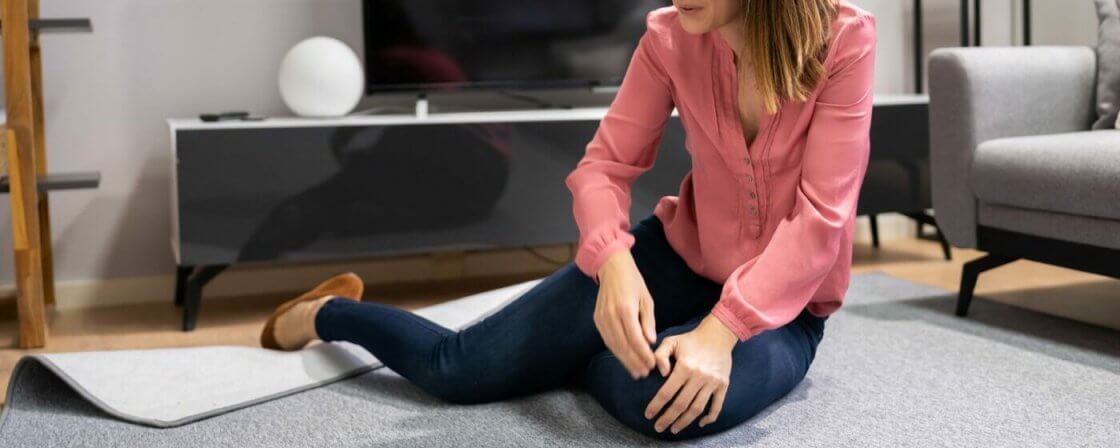Legal framework for working from home
Telecommuting now requires a written agreement, which must clearly specify in particular the place of work, the method of communication with the employer and the rules on working hours. It is important to determine whether the employer schedules the working time or whether the employee organises it himself. This information is crucial because it allows the employee to determine when he or she is and is not doing the work, which is decisive when assessing a possible work-related accident.
The agreement usually also includes an arrangement for reimbursement of costs associated with home working. The employer may provide a flat-rate compensation, which compensates in particular for energy consumption and other expenses related to teleworking, or it may be explicitly agreed that no compensation is provided. Such an arrangement must be voluntary and unambiguous. The agreement will also often include how the employee demonstrates the suitability and safety of his or her workplace, whether by photographs or other remote means, as the employer cannot usually enter the home.
Are you solving a similar problem?
Do you need to resolve your internal H&S regulations?
Leave it to us. We’ll check that your regulations contain all the necessary information or prepare them for you from scratch.
I want legal advice
- When you order, you know what you will get and how much it will cost.
- We handle everything online or in person at one of our 6 offices.
- We handle 8 out of 10 requests within 2 working days.
- We have specialists for every field of law.
Lack of OSH legislation for work at home
The Labour Code does not have any special version of OSH rules for home office. In essence, therefore, it is necessary to apply the general OSH regulation not only to office, hospital or any other normal work operations, but also to home operations, ideally in their entirety. However, if everything is followed to the letter, this would lead to rather absurd situations.
The employer has a number of statutory obligations in the area of OSH. These relate, for example, to:
However, the very first point makes us smile. How to imagine such risk identification at home? Should we expect an employer to visit our kitchen or bedroom? Will we fill in a questionnaire about the quality or the wobbliness of our chairs? And how do we proceed if we do not actually carry out the home office at home, but in the woods, on the beach or in a café?
How is the OSH solution in practice?
In practice, it is now considered sufficient if the employee provides the employer with basic information about his or her workplace so that it can be assessed whether it meets basic safety and ergonomic requirements. It is usual to provide photographs or a short video, or an affidavit from the employee that the workplace meets safety standards. Of course, the employee may also allow a personal inspection, but only voluntarily. No regulation gives an employer the authority to enter an employee’s home.
One of the most important obligations for the employer remains the proper training of the employee in OSH, which must be tailored to the specific type of workplace. If an employee works in different locations, for example alternately at home, in a café or in a cottage, more of the responsibility for a safe environment passes to the employee. The employer may also provide equipment that it considers necessary for the safe performance of the work.
Tip for article
Tip: Wondering what your employer’s obligations to you are? What criteria must your working conditions meet, what do you have to be paid for, and what about holidays? And conversely, what rights does your employer have against you? Find out in our article on: Employer’s rights and obligations towards the employee.
How do home office injuries qualify?
Since 2023, the Labour Code explicitly provides that the telework agreement must include, among other things, the method of scheduling working hours. This has practical implications for proving work-related injuries: if the employee schedules his or her own working hours, it must be established when the employee is “at work” in order to assess whether the injury occurred in connection with the performance of work.
The general definition of an accident at work is that it is an injury to the health or death of an employee if it is caused, independently of his will, by a short-term, sudden and violent external influence, solely in the course of or in direct connection with the performance of his work tasks.
However, a very interesting situation is the occurrence of an industrial accident during work at home. In this case, too, it is, of course, the employee’s basic duty to report the accident. The employer is then obliged to investigate. This raises the question of whether such an investigation can also be carried out on the basis of photographs or video recordings, or whether it is necessary to visit the employee’s home. If we accept the latter option, then this would involve voluntarily allowing the employer to enter the employee’s own home, which may not be comfortable for every employee. However, such entry cannot be forced.
The next question is how to prove something that was probably not witnessed. Moreover, the employer has little way of verifying that the injury occurred during working hours and in the course of work, even if the employee had let him or her into the apartment. In fact, it cannot be shown that the fall from the chair was related to the employee’s passing a dictionary from the upper floors of the library and not to hanging curtains, or that the computer, and not the defective blender, caused the electrocution.
In order to establish a telecommuting injury claim, there must be clear evidence that the employer facilitated the telecommuting and the employee was actually performing the telecommuting. The important element is precisely the determination of the working hours in the agreement. If the employee schedules his or her own working time, the decisive factor is whether the employee was demonstrably performing his or her work tasks at the time of the accident. Communication with the employer, testimony from a person present in the home or photographs of the scene of the accident may be supportive. Still, if the employee was engaged in an activity completely unrelated to work at the time of the accident – for example, cooking, shopping or attending to other household matters – it is not an accident at work.
Tip for article
Tip: We have covered work injuries and compensation claims in detail in our article.
Occupational disease
As already mentioned above, given that the home office is most often arranged for office work, it is impossible to imagine many types of occupational disease arising in this way, but the possibility cannot be completely ruled out.
The above information on the possibility of making a claim for compensation for an occupational injury should therefore also apply to the assessment of occupational diseases. If you work in a home office for a long period of time and you have a work-related illness that has been classified as an occupational disease by a specialist workplace, you can also make any claims that you would have made if you had attended a ‘normal’ workplace.
Claims for occupational injury or disease
The employer is obliged to compensate the employee for material damages, reasonable costs of treatment, loss of earnings and compensation for pain and suffering, as in the case of work-related accidents or illnesses occurring in the normal workplace.
These rules are no different for teleworking. All that matters is whether the injury or occupational disease is directly related to the performance of the work and whether this can be proved.
Summary
Working from home has become a common way of working in recent years and requires a written agreement that specifies the place of work, how working hours are to be scheduled, communication with the employer and the terms of reimbursement, often in the form of a lump sum. Even when working remotely, the employer is responsible for the safety of the employee, and the assessment of the home workplace is usually based on photographs or statements by the employee, as entry into his or her home is only voluntary. Workplace accidents can also occur in the home office if they occur during or in direct connection with work tasks, but proving this is often more difficult due to the absence of witnesses. The key issue is whether the employee was actually working at the time, which depends on the agreement on the working hours. Claims for occupational accidents and diseases remain the same as for workplace injuries and include compensation for material damage, medical costs, loss of earnings and compensation for pain and suffering.
Frequently Asked Questions
What is an accident at work and how is it reported?
An accident at work is an injury to health that occurs during or in direct connection with the performance of work tasks. As with ordinary workplace injuries, a home office injury must be reported to the employer immediately, as it is the timely reporting of a workplace injury that significantly affects its assessment and subsequent compensation. The employee should state when and how the injury occurred and provide available evidence, including information about witnesses if applicable. It is difficult to report an injury retrospectively and the employer may challenge its recognition.
What is the deadline for reporting an accident at work and what is the risk of late reporting?
The deadline for reporting an accident at work is not fixed in the Labour Code, but the employee must report the accident without undue delay. The later the reporting occurs, the more difficult it will be to prove and it may be disputed whether the accident actually happened at work. Late reporting also slows down the entire work injury process, which also affects how long it takes to pay a work injury claim.
How is work injury compensation calculated and what is included?
Work injury compensation consists of several items, such as compensation for loss of earnings, reasonable medical expenses, damages in kind and pain and suffering. The calculation of work injury compensation is often based on a score that includes the permanent consequences of the work injury. Work injury pain and suffering awards are determined according to Supreme Court guidelines, which are updated periodically, so the amount may vary from year to year. Specialist insurers, such as Kooperativa, then follow their own internal procedures, but the default methodology is the same for all.
Is work injury compensation payable without incapacity for work or after the end of employment?
Yes, you can get compensation for a work-related injury without being unable to work, as long as it is proven that the injury actually happened at work. Post-employment injury compensation is also available because the time of the injury is the relevant time, not the duration of the employment relationship at the time of settlement. Compensation for a work-related injury in a work performance agreement is governed by similar principles as in an employment relationship, so a temporary worker can also claim for pain and suffering or loss of earnings. On the other hand, work injury compensation and tax returns are not directly related because compensation is not subject to tax or execution.
How are work injuries paid and how long does it take to get paid?
An accident at work is not “paid” from the employer’s wages, but from the employer’s statutory liability insurance, which is administered by the insurance company Kooperativa for a large number of employers. How long it takes to pay an accident at work depends mainly on the speed of documenting all the supporting documents, on the recognition of the accident as work-related and on the completion of the treatment, which is necessary to determine the pain and any points for permanent consequences. A work-related injury may also be paid in the form of a lump sum or in graduated payments, depending on the damages suffered by the employee. Wage compensation in the event of a work-related injury is then payable to the employee in the same way as in the case of ordinary incapacity for work.




